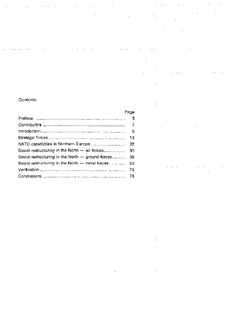| dc.description | In Vienna , March 9, 1989 both NATO and the Warsaw Pact tabled their proposals for the implementation of conventional force reductions in Europe. The common objective of the negotiations is to enhance military stability in Europe from the Atlantic to the Urals.
Although Northern Europe, including Norway and its adjacent territory, has been dealt with, this has only been done in a peripheral and indirect way. In particular, the disarmament talks have not adresses the pecularities of the situation in Northern Europe - pecularities that derive from a particular configuration of opposing forces in this part of Europe. The object of this study is to examine what sort of disarmament and confidence-building measurer need to be implemented in the North in order to maximize regional stability in general and, more specificallty, to reduce the offensive potential of Soviet forces in particular. | en_US |
